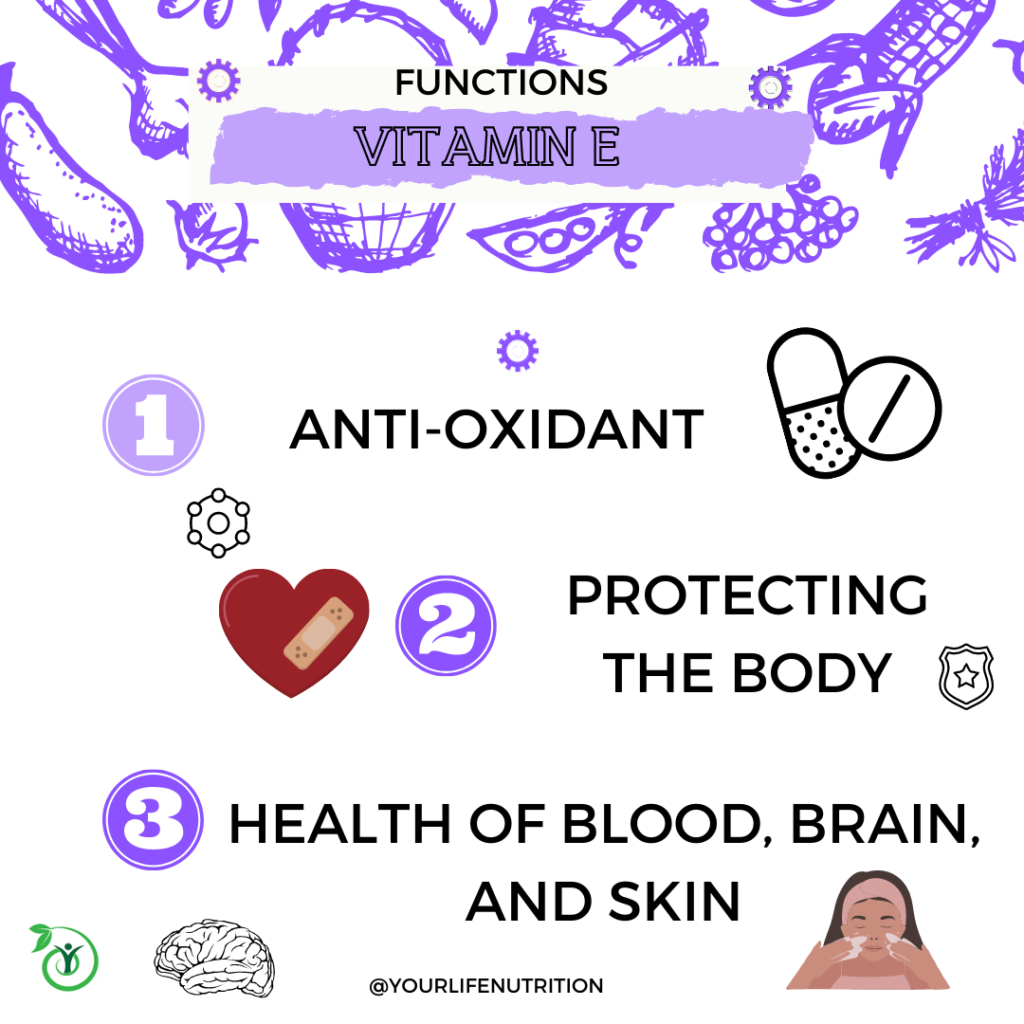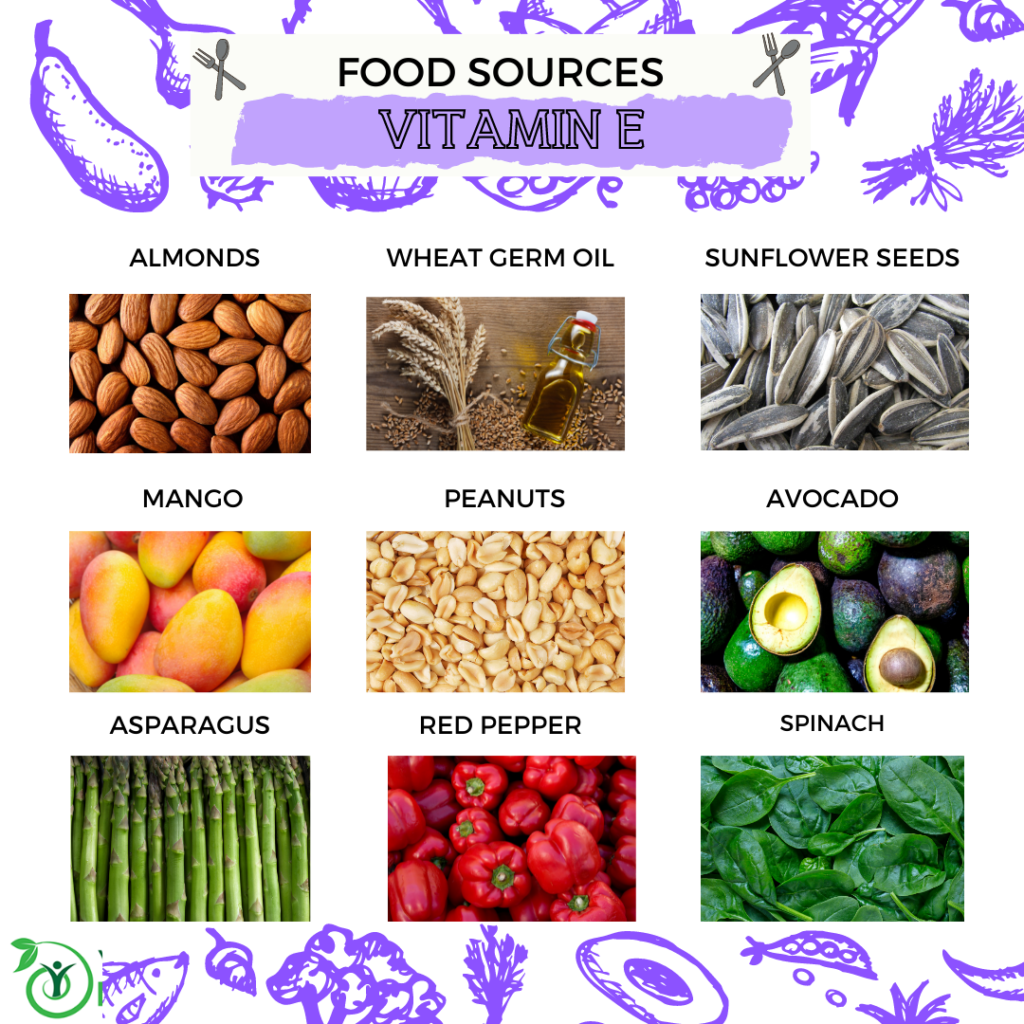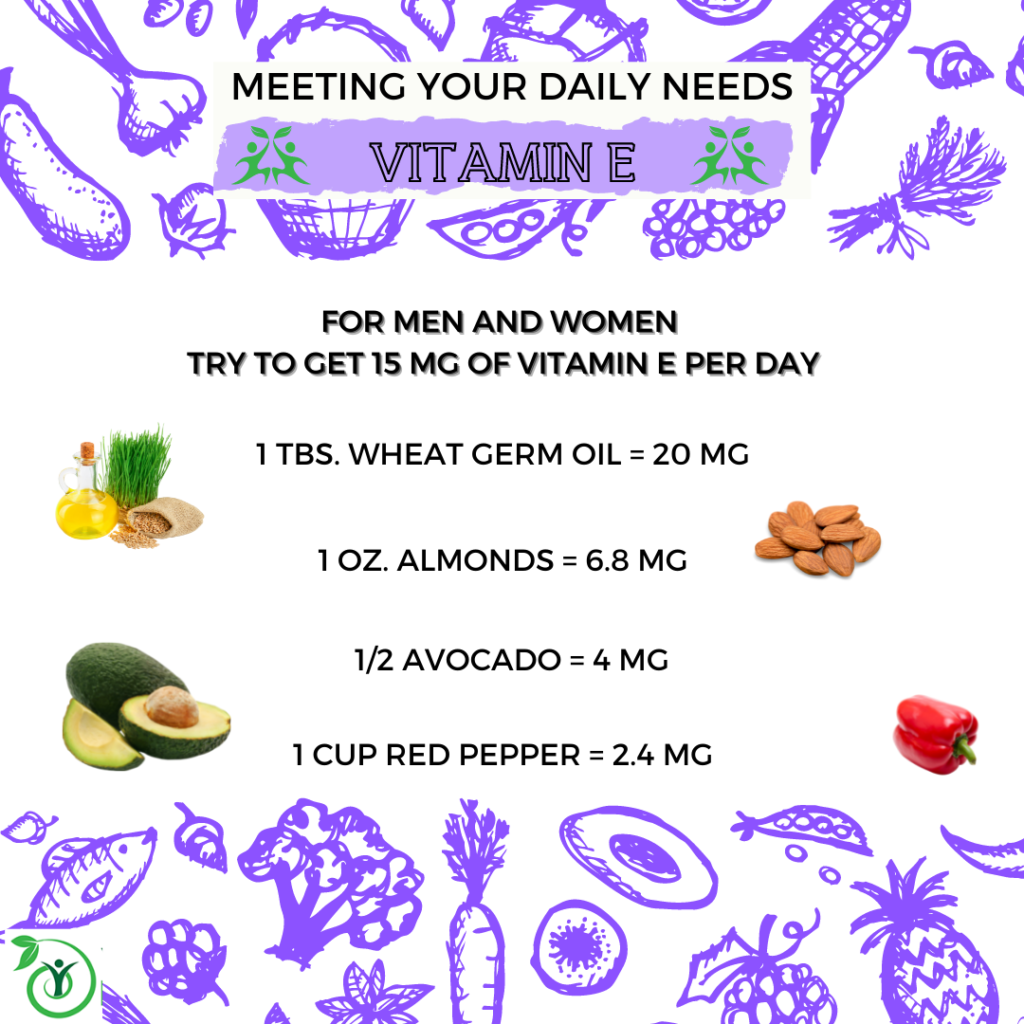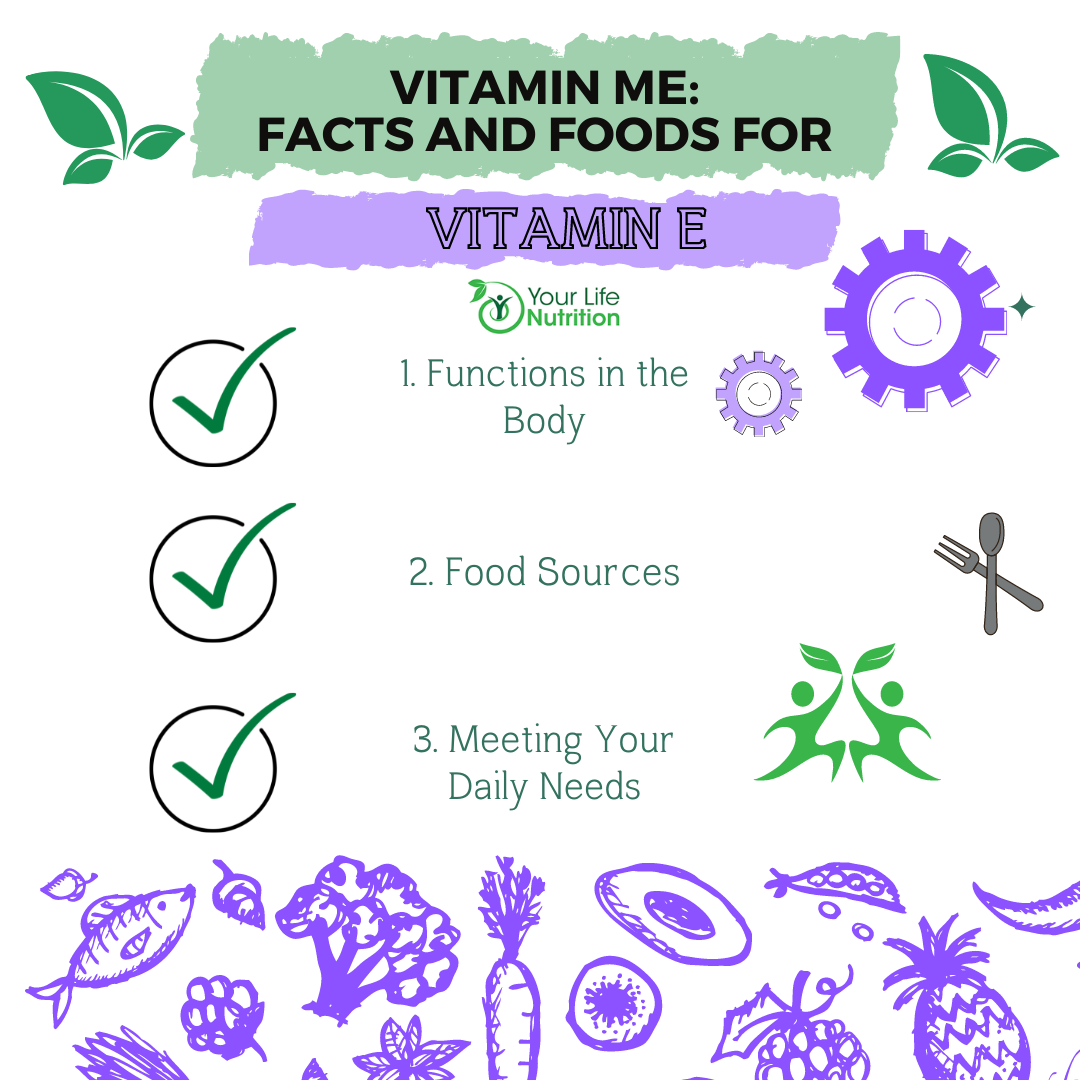Did you know that there are several different forms of vitamin E? Eight, to be exact.1 But, of those 8 our bodies can only use one and it goes by the name of alpha-tocopherol.1 You may be thinking, “If there are so many forms of this one vitamin and our bodies can only use one, it must have a pretty important job”, and that is exactly so!1

Vitamin E is one of the four fat-soluble vitamins and one of three vitamins that has a very special and important job which is to act as an antioxidant.1 If you’ve been keeping up with our “Vitamin Me” series, you may remember from learning about vitamin C that an antioxidant is the body’s version of the police.1 You see, as the body breaks down food, is exposed to toxic substances like tobacco smoke and excessive UV radiation from the sun or X-ray machines, and even exposed to pollution it creates these pesky little free-radicals.1 But, why do these free radicals cause so much trouble? Well, in the body we have these little particles called atoms and each atom has a specific number of electrons to keep it stable and happy. When we get exposed to those toxic substances we discussed earlier, they fill our bodies with free radicals which are atoms that do not have the number of electrons that keeps them happy and stable. In order to fix this, they search for another electron to replace the one they’re missing, leaving the atoms our body needs feeling unwell and unable to perform its job.

The job of an antioxidant is to give this free-radical one of their electrons, so they won’t take it from our body’s supply. Therefore, they are the police of our bodies. They stay on patrol looking for the electron thieves and put a stop to their trouble. The damage free radicals cause is very serious and can lead to artery-clogging, atherosclerosis, cancer, vision loss, and many more chronic conditions which is why having an abundance force of antioxidants is so important.1 In addition to this, vitamin E helps keep our immune system strong, it plays a part in healthy vision, reproduction, and the health of the brain, blood, and skin.1,2

So, how much vitamin E do we need to protect the body from these free-radicals? The recommended daily allowance (RDA) is 15 mg daily or 22 IU.1 So, where can we find the vitamin E our body needs? Here are some great options to include in your diet:
- Wheat germ oil = 20 mg per tablespoon
- Sunflower seeds = 7.4 mg in 1 oz.
- Almonds = 6.8 mg in 1 oz.
- Sunflower oil = 5.6 mg in 1 tablespoon
- Safflower oil = 4.6 mg in 1 tablespoon
- Avocado = 4 mg in ½ fruit
- Peanut butter = 2.9 mg in 2 tablespoons
- Red bell pepper = 2.4 mg in 1 cup
- Peanuts, roasted = 2.2 mg in 1 oz.
- Mango = 1.5 mg in 1 cup
- Asparagus = 1.4 mg in 1 cup
- Soybean oil = 1.1 mg in 1 tablespoon
- Spinach = 0.6 mg in 1 cup

Vitamin E is not talked about as often as other vitamins; however, it is a very important nutrient to have to keep our bodies safe from those thieving free-radicals. It is also super easy to incorporate foods naturally containing vitamin E in the diet to meet our daily needs. So, the next time you eat one of these vitamin E rich foods, don’t forget you are arming your body’s forces to fight off and protect yourself from free radicals.
Post created by Your Life Nutrition intern from the University of Akron: Michaela Campbell
References:
- Vitamin E. The Nutrition Source. https://www.hsph.harvard.edu/nutritionsource/vitamin-e/. Published May 13, 2021. Accessed January 27, 2022.
- Vitamin E. Mayo Clinic. https://www.mayoclinic.org/drugs-supplements-vitamin-e/art-20364144. Published November 13, 2020. Accessed January 27, 2022.





